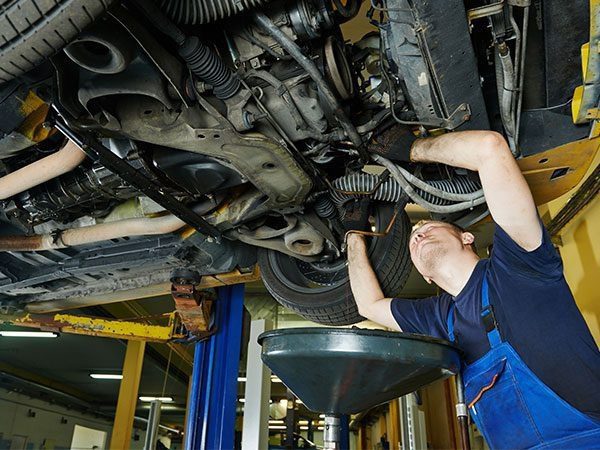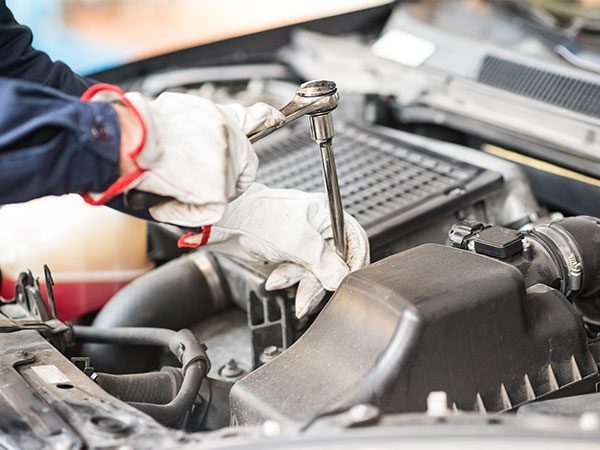Bill’s radiator & Muffler
Plano, Texas
Bill’s Radiator and Muffler – Your Trusted Auto Repair Plano Texas!
Car problems happen, but having a dependable auto repair Plano Texas, helps. At Bill’s Radiator and Muffler, we’re here for everything your car needs, from regular checkups to unexpected fixes. Trust us to keep your vehicle working well.
Radiator Services
Muffler Services
Trailer Repair
Brakes
Overheating Repair
Top-Tier Auto Repair Plano Texas Services
At Bill’s Radiator & Muffler, we take pride in offering a wide range of services that cater to the diverse needs of your car:
Radiator Services
Your Engine’s Best Friend
At Bill’s Radiator & Muffler, our radiator services are about keeping your engine cool and happy. Imagine our experts giving your vehicle’s cooling system a checkup and a boost. We make sure it stays in top shape so your engine doesn’t get too hot, especially on long drives. Trust us to keep your journeys smooth and worry-free. So, when it comes to radiator care, we’ve got your back at Bill’s Radiator & Muffler – where your engine’s well-being is our top priority!
Muffler Services
Make Your Presence Heard on the Road!
At Bill’s Radiator & Muffler, we design our muffler services to announce your arrival on the road with style. Imagine our skilled technicians working their magic to boost your vehicle’s performance and make sure its voice is as bold as its engine. We’re not just about fixing – we’re about ensuring your car stands out, delivering a powerful performance on every journey. Bill’s Radiator & Muffler guarantees muffler services that allow your vehicle to express its voice in the most impressive way possible.
Trailer Repair
Your Towing Companion’s Best Friend!
When it comes to trailer troubles, trust Bill’s Radiator & Muffler for the solution. Our specialized trailer repair service ensures your towing companion is in optimal condition, ready for any adventure you have in mind. Whether addressing a minor fix or conducting a significant repair, our team dedicates itself to ensuring your trailer is road-ready and reliable. Count on us for top-notch trailer repair that guarantees smooth towing on every journey.
Brakes
Your Safety is Our Priority!
At Bill’s Radiator & Muffler, your safety takes center stage. With our meticulous brake services, we guarantee that every stop you make is smooth and secure. Trust us for brakes that never compromise on safety – because when it comes to your well-being on the road, we don’t take chances. Choose Bill’s Radiator & Muffler – your No.1 Auto repair Plano Texas for brake services that prioritize your safety without compromise.
Oil Change
Refresh Your Engine with Ease!
Keep your engine in top-notch condition with our quick and efficient oil change service at Bill’s Radiator & Muffler. We provide a rejuvenating experience for your vehicle’s heart, ensuring it runs smoothly and efficiently. Trust us for a hassle-free oil change that keeps your engine purring and ready for the road ahead.
General Auto Repair
Your Complete Automotive Solution!
At Bill’s Radiator & Muffler, we’ve got you covered from diagnostics to repairs with our general auto services. Consider us your one-stop destination for comprehensive and reliable automotive care. Whether it’s a check-up, a fix, or anything in between, trust our team to keep your vehicle in shape. Choose Bill’s Radiator & Muffler for all-encompassing auto repair Plano Texas, that ensures your ride stays in peak condition.
Overheating Repair
Cool Solutions for Your Engine!
When it comes to cooling system repairs to address overheating concerns, Bill’s Radiator & Muffler is your go-to specialist. Our experts ensure that your engine stays cool under pressure, preventing any overheating issues. Experience the epitome of automotive excellence with Bill’s Radiator & Muffler. Your journey to unparalleled car care starts right here!
Our Specials
Power Flush Service
Boost Your Vehicle’s Performance!
Our power flush service at Bill’s Radiator & Muffler gives your vehicle a performance boost. Bid farewell to sludge and contaminants and welcome a smoother, more efficient ride. Don’t wait—schedule your power flush today for a revitalized driving experience!
Trailer Bearing Repacked Service
Smooth Rides Ahead!
Ensure a smooth ride for your towing companion with our trailer-bearing repacked service at Bill’s Radiator & Muffler. Trust us to keep your trailer rolling smoothly on the road, ensuring safety and reliability. Don’t wait – schedule your service today for worry-free towing on your next adventure!
Our Complimentary Services Just For You
Who doesn’t love free services, right? Drive in today, free of charge!
Free Brake Check
Because Your Safety Matters!
Stop by Bill’s Radiator & Muffler for a complimentary brake check. Your safety is our priority; we’re here to ensure your brakes are in top condition. Drive in today for a worry-free inspection because we’ve got you covered when it comes to your safety on the road!
Free Coolant Check
Keep Your Engine Cool!
Stop by Bill’s Radiator & Muffler – your No.1 Auto repair Plano Texas for a free coolant check. Keep your engine cool and running smoothly. Drive in today for peace of mind and top-notch care – because a cool engine is a happy engine!
Free Exhaust Check
Breathe Easy with Bill’s Radiator & Muffler!
Bring your vehicle to Bill’s Radiator & Muffler for a complimentary exhaust check. Our team will ensure everything is running smoothly so you can drive in for peace of mind today. Breathe easy, and trust us for a worry-free exhaust inspection!
Free Trailer Auto Safety Evaluation
Prioritize Your Towing Companion’s Safety!
At Bill’s Radiator & Muffler, we’ve got your back with a free safety evaluation for your trailer. Prioritize your towing companion’s safety and ensure it’s in top-notch condition. Because at Bill’s, safety always comes first! Schedule your free evaluation today for worry-free towing on your next adventure.
Why Bill’s Radiator & Muffler Leads the Way:
Top-Notch Car Care with The Experts
Let our skilled ASE Certified technicians look after your car. With loads of experience, we swiftly identify and fix any car issue. Rely on Bill’s Radiator & Muffler for top-notch service, whether a tricky problem or a basic service like an oil change. Your car deserves the best – give us a call or drop by today!
Total Car Care: Any Make, Any Model
At Bill’s Radiator & Muffler, we’ve got you covered for all car makes and models. When you need auto repair Plano Texas, think of us first! Whether it’s a local or international ride, trust that we have the expertise to solve any issue your car faces. Count on us for unmatched service, making sure your vehicle gets the top-quality care it needs.
Cutting-Edge Technology for Superior Auto Repair Plano Texas
At Bill’s Radiator & Muffler, we pride ourselves on using advanced technology for unparalleled auto repair Plano Texas. Our commitment to staying ahead ensures your vehicle gets the best-in-class service it deserves. Experience the difference with our state-of-the-art solutions for your automotive needs!
Unmatched Cleanliness at Bill’s Radiator & Muffler
Walk into a world where cleanliness and top-quality auto repair Plano Texas. Our dedication to maintaining a spotless environment guarantees that your car gets the superior care it deserves. Witness the distinction at Plano’s cleanest auto shop!
Top-Notch Auto Repair Plano Texas, Without the High Price Tag
At Bill’s Radiator & Muffler, we make sure you get excellent auto repair Plano Texas, that won’t cost you a fortune. We aim to give you excellent service at a price that works for you. Get the best for your car and wallet – experience top-quality without the hefty cost!
Fast Service You Can Count On
We get it at Bill’s Radiator & Muffler – things need fixing fast. When your car needs attention, we’re here to help quickly. Get speedy solutions for your auto repairs without any fuss!
Caring for the Environment at Bill’s Radiator & Muffler
At Bill’s Radiator & Muffler, we take our responsibility to the environment seriously. Our commitment to environmental care ensures that our service aligns with eco-friendly practices. Experience auto care that respects the planet at Bill’s Radiator & Muffler – your No.1 Auto repair Plano Texas !
Customer Satisfaction at the Core
At Bill’s Radiator & Muffler, we’re committed to delivering unparalleled service. Your satisfaction is more than a goal; it’s our joy. From diagnostics to fixes, our dedication ensures an exceptional experience. But don’t just take our word for it – explore client testimonials and discover why choosing Bill’s Radiator & Muffler means prioritizing your contentment. Our clients love us, and your happiness is our measure of success. Opt for auto care that goes beyond repairs; choose happiness with us!
CONTACT US
Phone: (972) 422-1130
How it works
Got overheating issues? Follow the the steps below for fast and reliable experience with Bill’s Radiator & Muffler.
1
Contact Us
2
Get Free Quote
3


